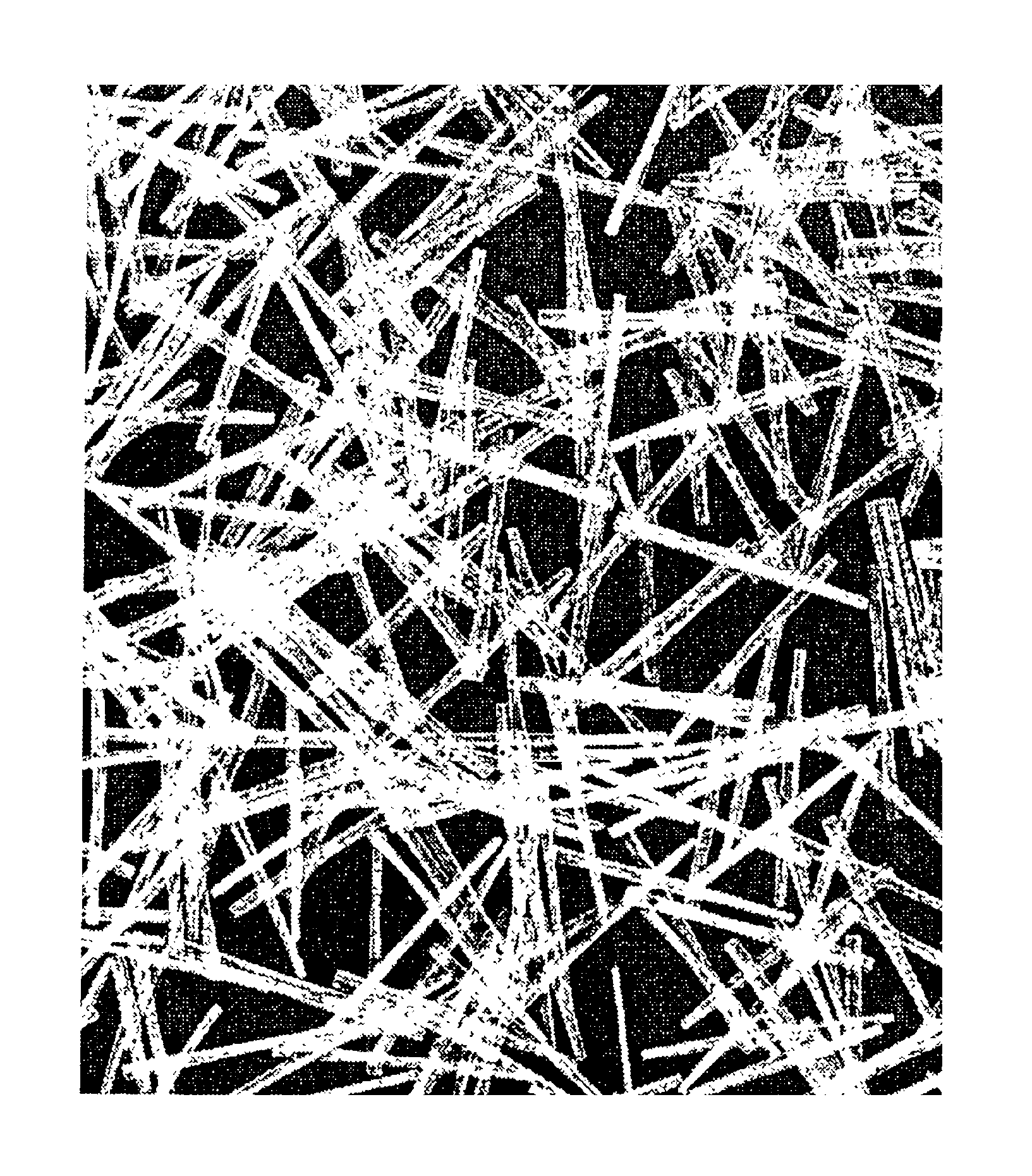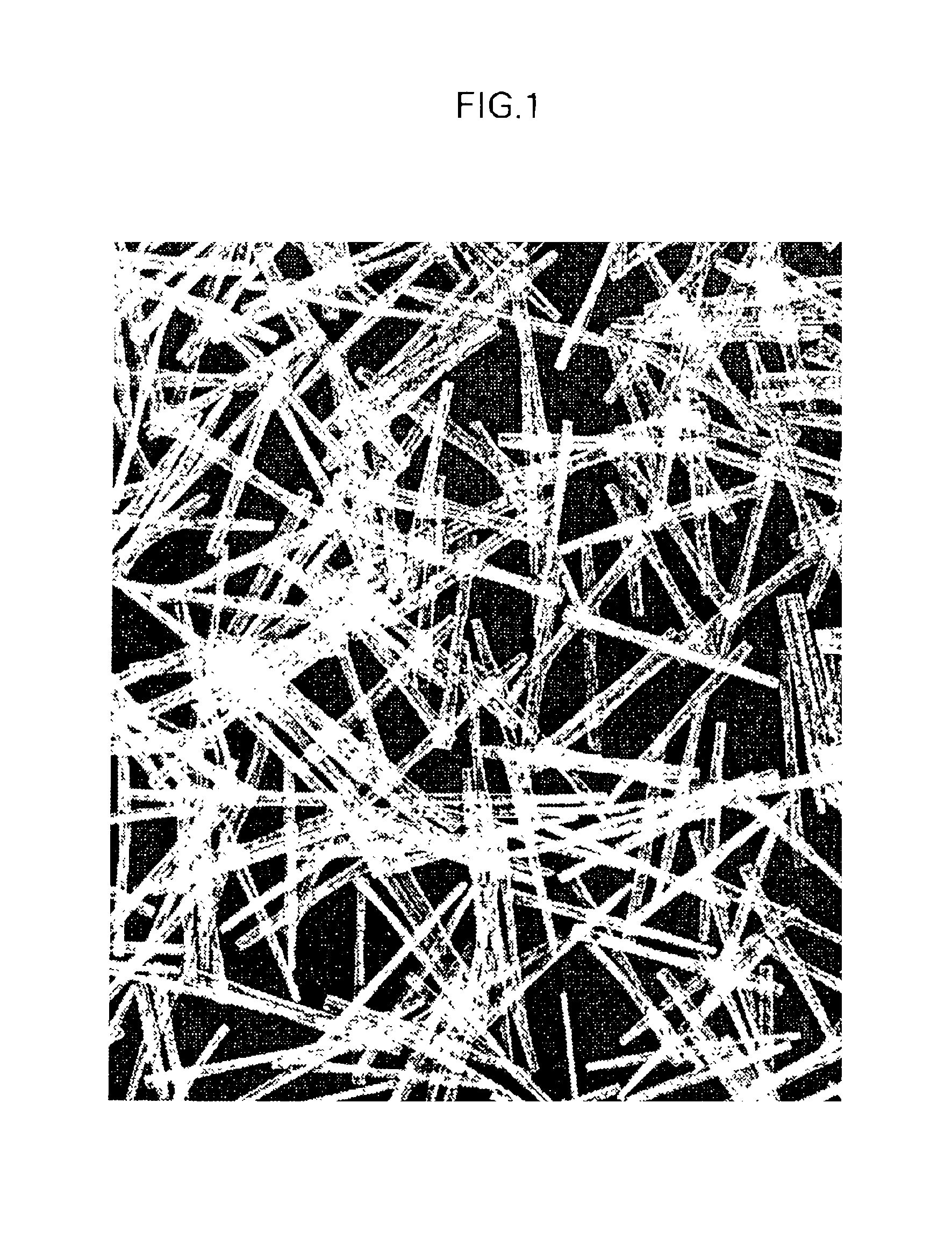Long-fiber-reinforced thermoplastice resin sheets, production process thereof, and composite structures reinforced by the sheets
a technology of thermoplastic resin and long fiber, which is applied in the direction of other chemical processes, melt spinning methods, ways, etc., can solve the problems of inferior processability, frtp sheets, and need for processing labor, and achieves improved mechanical strength, strong adhesion, and low base weight
- Summary
- Abstract
- Description
- Claims
- Application Information
AI Technical Summary
Benefits of technology
Problems solved by technology
Method used
Image
Examples
example 1
A single strand of glass fibers, which had been obtained by forming 600 monofilaments of 13 μm in average diameter into a bundle without application of splitting, was subjected to melt impregnation while introducing the strand into a melt of acid-modified polypropylene having a melt index of 40 (MI=40) (melting temperature: 260° C.), and the thus-impregnated strand was pulled at a rate of 50 m / min through a nozzle of 0.42 mm in internal diameter to obtain an L-FRTP strand having a substantially circular cross-sectional shape. The average diameter of the resultant L-FRTP strand was 0.42 mm, and its degree of impregnation was 100% in terms of an average of five samples (n=5). The letter “n” represents the number of samples measured (this will apply equally hereinafter).
To measure the content of glass, the thus-obtained L-FRTP strand was firstly heated in an electric furnace controlled at 600° C. to cause the resin to burn off, and then, the weight of the remaining glass was measured. ...
example 2
An L-FRTP strand was obtained in a similar manner as in Example 1 except that the nozzle diameter was changed to 0.53 mm. The thus-obtained L-FRTP strand had an average diameter of 0.53 mm, a glass content of 45 vol. %, and a degree of impregnation of 99% in terms of an average of 5 samples (n=5) The L-FRTP strand was then chopped into 30 mm lengths by a pelletizer to produce short strands. The short strands so obtained were once store in a trunk box. The L-FRTP short strands were then delivered from the trunk box, fed onto an oscillating feeder to separate the tangled short strands, and fed to a parts feeder. The short strands were fed at a constant rate from the parts feeder onto an oscillating conveyor equipped with load cells. The short strands were quantitated there such that a basis weight of 200 g / m2 can be achieved on a conveyor.
The short strands obtained as described above were spread on the last-mentioned conveyor to give a basis weight of 200 g / m2, passed through an oven ...
example 3
An L-FRTP strand was obtained in a similar manner as in Example 1 except that the nozzle diameter was changed to 0.70 mm. The thus-obtained L-FRTP strand had an average diameter of 0.65 mm, a glass content of 35 vol. %, and a degree of impregnation of 98% in terms of an average of 5 samples (n=5). In a similar manner as in Example 1, chopping and sheeting of the L-FRTP strand were conducted to obtain an L-FRTP sheet. The short strands in the sheet were 3.8 mm in width and 30 mm in length. The thus-obtained sheet was integrated with a base material in a similar manner as in Example 1. In a similar manner as in Example 1, specimens were obtained and measured for maximum flexural strength (n=3). The average of measurement data of the three specimens is shown in Table 1.
PUM
| Property | Measurement | Unit |
|---|---|---|
| length | aaaaa | aaaaa |
| width | aaaaa | aaaaa |
| thickness | aaaaa | aaaaa |
Abstract
Description
Claims
Application Information
 Login to View More
Login to View More - R&D
- Intellectual Property
- Life Sciences
- Materials
- Tech Scout
- Unparalleled Data Quality
- Higher Quality Content
- 60% Fewer Hallucinations
Browse by: Latest US Patents, China's latest patents, Technical Efficacy Thesaurus, Application Domain, Technology Topic, Popular Technical Reports.
© 2025 PatSnap. All rights reserved.Legal|Privacy policy|Modern Slavery Act Transparency Statement|Sitemap|About US| Contact US: help@patsnap.com



